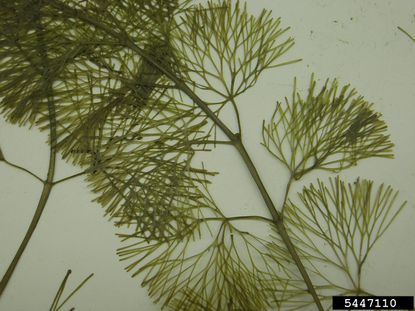Carolina Fanwort Info – How To Grow Cabomba Fanwort In A Fish Tank


Many consider adding live plants to aquariums, garden ponds, or other aquascapes to be essential in creating a visually appealing water garden with the desired aesthetic. Learning more about specific aquatic plants and their needs is just the first step in deciding what may or may not be a good candidate.
The cabomba fanwort, for example, should be closely considered before its introduction into the environment. It may, however, be an option for controlled settings such as fish tanks.
What is Carolina Cabomba?
Cabomba fanwort (Cabomba caroliniana), also known as Carolina cabomba, is native to much of the southeastern United States. This aquatic plant is most commonly found in ponds, streams, and lakes where water is frequently calm and still. These freshwater perennial plants send up stems from the bottom of the body of water. Along the stems are several, fan-shaped leaves that are fully submerged.
One essential point of Carolina fanwort info to note is its ability to spread. Many may be led to question, is cabomba invasive? Fanwort plants can quickly multiply and overtake larger bodies of water. Those wishing to plant in aquariums and other small water features may be able to better control the spread of this plant. However, growing Carolina cabomba does not come completely without risk.
Growing Carolina Cabomba
After deciding to begin growing Carolina cabomba, water gardeners will need to obtain the plant. This can be done through various online specialty plant nurseries. Ideally, transplants should have several stems and a robust root system. Those living in the plants’ native range may not have difficulty maintaining it outdoors.
However, those growing indoors in tanks will need to give close attention to their needs. Specifically, those growing Carolina cabomba will likely need to increase tank light wattage for an extended amount of time each day. While cabomba fanwort is most commonly planted in the substrate at the bottom of the tank, it may also be grown as a floating plant.
If choosing to plant cabomba fanwort in outdoor ponds or water features, it does offer some benefits. This includes providing a sheltered location for fish, as well as helping to manage algae growth. Introducing the plant into an outdoor aquatic environment is similar to introducing it into fish tanks. However, outdoor growers do have the additional option of planting into pots and then submerging the container at the bottom of the body of water.
Gardening tips, videos, info and more delivered right to your inbox!
Sign up for the Gardening Know How newsletter today and receive a free download of our most popular eBook "How to Grow Delicious Tomatoes."
Before planting outdoors, gardeners should always reference local invasive species and noxious weed lists.

Tonya Barnett has been gardening for 13 years. Flowers are her passion. She has trasformed her backyard into a cut flower garden, which she regularly chronicles on her YouTube channel http://www.youtube.com/@tonyawiththeflowers.
-
 Urban Composting Guide: How To Compost In The Middle Of The City
Urban Composting Guide: How To Compost In The Middle Of The CityUrban composting does not have to be daunting. You can compost in the city, and maybe even try some urban worm composting!
By Mary Ellen Ellis
-
 Shrub Diseases And Pests To Watch Out For
Shrub Diseases And Pests To Watch Out ForShrub diseases and pests can be challenging. Learn how to recognize and eradicate them before they can present a danger to your plants.
By Susan Albert